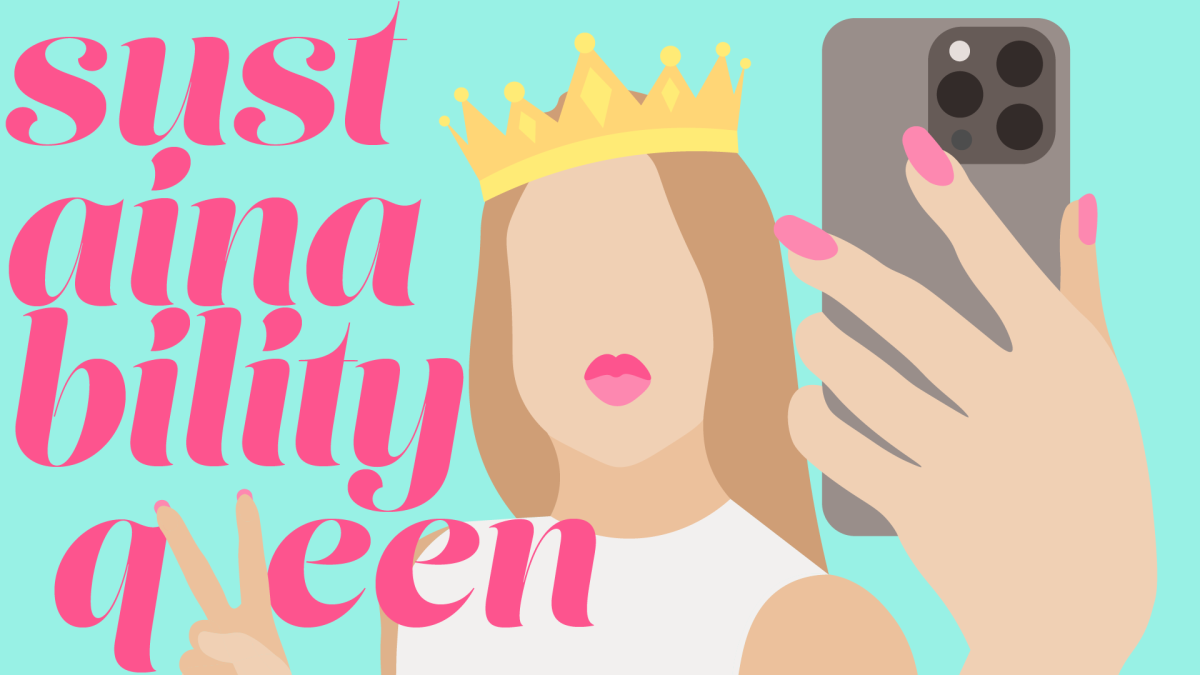In recent months, you may have come across TikToks of influencers demonstrating the different ways they practice sustainability, otherwise known as “underconsumption core.” Most individuals show off their eco-friendly toiletries and sustainable shopping habits with Norah Jones’ song “Don’t Know Why” playing in the background for a homey effect.
But are these really novel ideas for environmental conscientiousness, or are they just standard habits we should already be practicing?
While it’s wonderful to see greater awareness of how overconsumption impacts the environment, I can’t shake the feeling that many people are seeking praise for bare minimum sustainable practices.
We live in a world where material consumption is at its peak, so there’s nothing inherently wrong with encouraging the use of perfectly functioning products that may be a little out of fashion. On the other hand, I don’t see a reason to pat oneself on the back for abstaining from materialism when keeping products until they’re no longer usable should be the norm.
For example, some influencers have highlighted how they’ve kept the same smartphone for several years to limit technological waste. In my mind, it’s completely normal to keep a cell phone for as long as possible, and it isn’t necessarily equivalent to being sustainable.
Another thing people have flaunted is how they use their makeup and skincare products entirely before discarding them. There’s no need to throw away something that has usable product left, but then again, it’s unnecessary to look for praise for not engaging in such habits.
What I find most peculiar about underconsumption core is that many of the habits have long been in practice by people with less financial freedom. Slapping the label of sustainability onto certain lifestyle choices can be somewhat invalidating to those who are frugal out of necessity.
Many individuals refrain from engaging in shopping trends not by choice but because they lack the disposable income to do so. One’s financial situation may prevent them from being able to buy trendy home decor or the best new facial serum on the market.
While limiting unnecessary purchases reduces material waste in the long run, it’s not necessarily a revolutionary idea contrived by innovative environmentalists.
And believe me, I know things like thrift shopping can reduce carbon emissions and benefit the environment. But let us not forget that secondhand stores like Goodwill originated to provide clothing for those facing financial burdens.
When I think of the true meaning of sustainability, I picture individuals holding themselves accountable for how their lifestyles impact the environment and actively searching for ways to improve their daily habits. Sustainability is not a competition over who is the most selfless, but rather it’s taking action to ensure that the health of our planet is maintained for generations to come.
Ultimately, supporting Mother Nature should be on everyone’s agenda, but acting as though you are single-handedly saving the planet by using a reusable straw isn’t the best approach to sustainability. I think posting about underconsumption is the same as when people record themselves giving money to the homeless; it’s a kind gesture, but do you have to boast about it online?
Frugality and underconsumption have a lot of overlap, and whether your sustainable habits are done out of concern for the environment or personal circumstances doesn’t really matter. What matters is that we recognize the detrimental effects of excessive consumption and reflect on how we can limit material waste as individuals.














